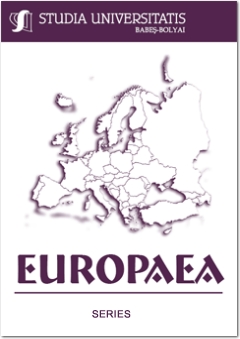THE TWO EUROPES. INDUSTRIAL EUROPE AND AGRARIAN EUROPE IN THE INTERWAR PERIOD
THE TWO EUROPES. INDUSTRIAL EUROPE AND AGRARIAN EUROPE IN THE INTERWAR PERIOD
Author(s): Delia-Cristina LungSubject(s): Economy
Published by: Studia Universitatis Babes-Bolyai
Keywords: gaps; industrial Europe; agrarian Europe; industrialization; agricultural productivity.
Summary/Abstract: The existing gaps between countries of Central and south-eastern Europe and the developed countries of the West are a certainty of the contemporary world. Their existence and accumulation are no longer denied, but accepted as a quasi-tangible reality. However, the problem of these gaps between "the two Europes" is now more acute than ever, since many of the states belonging to one or other of the two Europes tend towards an economic and political unity: the European Union. These gaps make, however, the integration of agrarian countries (or agro-industrials) a real problem, because the "backwardness" towards Western countries, highly industrialized, is a challenge. Throughout history, the gaps have increased, which means in practice that some states or regions have continued to become more wealthy, while others have become poorer. Thus, today was reached the two-speed Europe formula, which is originated in the gaps between the two old Europes: the agrarian and the industrial ones.Throughout this paper we will attempt to illustrate which are the gaps between the two Europes and how they have accumulated. Starting from the premise that gaps have accumulated throughout European history, we will pursue the development efforts of the Western, Central and south-eastern European countries along the Industrial Revolution, World War I and interwar period, focusing on agricultural and industrial sectors.
Journal: Studia Universitatis Babes-Bolyai - Studia Europaea
- Issue Year: 59/2014
- Issue No: 4
- Page Range: 83-99
- Page Count: 17
- Language: English

